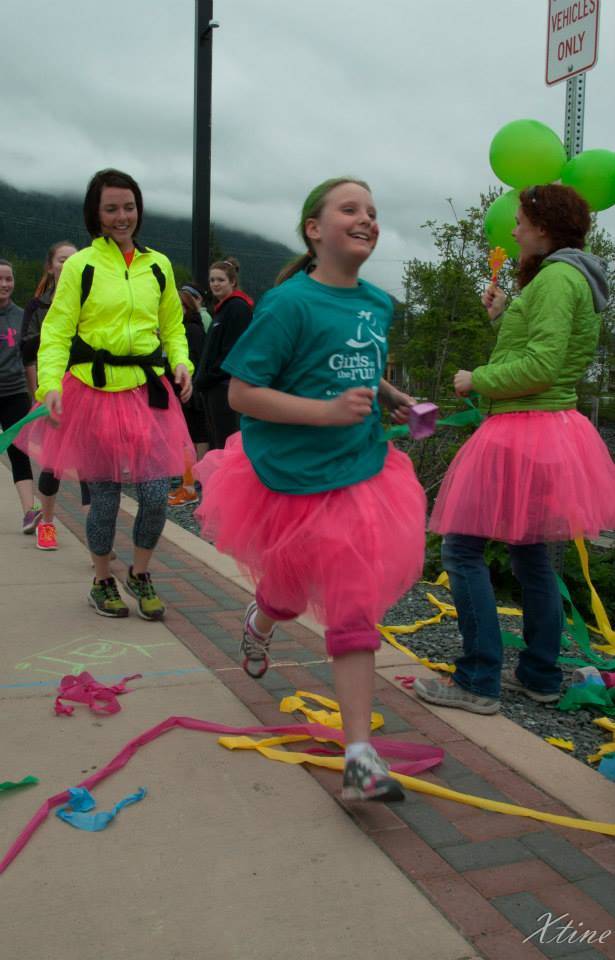The numbers don’t lie. According to the most recent Alaska Victimization Survey, 47 percent of adult women in the City and Borough of Sitka have experienced intimate partner violence, sexual violence or both; seven percent in the past year.
While these statistics may be sobering, the community’s response is definitely heartening. For more than 40 years now, Sitkans Against Family Violence (SAFV) has been providing empowerment-based safety and advocacy for victims of domestic violence and sexual abuse, as well as promoting a culture of non-violence and respect.
What began in 1976 as a crisis hotline has, over the course of four-plus decades, grown into a full-service shelter, serving survivors with secure, temporary living conditions, personal support, safety planning and access to a variety of services to rebuild safe lives on their own.
“We help people through extremely tough situations,” said Michelle Mahoney, SAFV Acting Director.
SAFV’s shelter, with a capacity of 24 women and children, consists of six bedrooms — outfitted with closets, storage and bedding — bathrooms, lockers, a full kitchen, two communal living rooms, a laundry room and a children’s playroom. Of course, SAFV supplies its residents with food, basic toiletries and towels, detergent, baby needs, children’s toys, books and art materials.
In addition to shelter, SAFV offers victims crisis intervention, advocacy and support; legal advocacy, information and referral; and systems advocacy, which can include medical services, social services, mental health, housing, public assistance and other organizations.
“Our staff members include well-trained advocates, especially adept at navigating the legal and healthcare systems,” Mahoney said.
“Perpetrators leave their victims feeling isolated and devastated,” she explained. “It’s so rewarding to connect them with whatever resources they need to restore their confidence.”
Based in Sitka, SAFV also serves the surrounding communities of Port Alexander, Kake and Angoon, supplying safe homes, advocacy trainings, educational presentations and other forms of rural outreach.
“Our advocates practice culturally relevant, trauma-informed advocacy,” Mahoney said.
Indeed, SAFV works closely with both the Alaska Native and LGBT communities. And in keeping with its ethos of inclusivity, SAFV will also assist male victims in finding safe housing, along with offering them advocacy and supportive services.
“Men experience domestic violence and sexual abuse, too,” she said.
Of course, SAFV’s work doesn’t end with shelter and advocacy. The organization also runs a substantial prevention program, geared toward stopping violence before it starts.
To that end, SAFV coordinates a variety of educational initiatives in conjunction with the public schools. This includes safety seminars in every grade, kindergarten through 12th, as well as Girls on the Run and Boys Run I toowú klatseenafter school programs for third, fourth and fifth graders, and Coaching Boys into Men, which incorporates a curriculum of respect and violence prevention into high school athletics.
For the community at large, SAFV conducts annual advocacy trainings and hosts a variety of public conversations. Its DV Task Force — which, besides SAFV, includes members from the Sitka Public Health Center, Sitka Tribe of Alaska, the District Attorney’s office, the Sitka Police Department, Southeast Alaska Regional Health Consortium (SEARCH) and Sitka Community Hospital—meets monthly to exchange information and collaborate on events to further violence prevention. And, for the past six years, SAFV has organized Sitka’s annual “Choose Respect” March, in which hundreds of community members come together to take a stand against domestic violence and sexual abuse.
If that sounds ambitious, it is — and it couldn’t happen without incredible outside support.
For one, SAFV relies heavily on its volunteers — a diverse array of old and young, representing various abilities, socioeconomic levels and ethnicities. Volunteers donate an average of 1050 hours per year, answering the crisis hotline, assisting with direct advocacy, providing childcare and helping with fundraising, special events, youth-based programs, safe homes and shelter maintenance.
“We’re so supported and we’re so grateful,” Mahoney said. “Smaller communities really do pull together.”
Like most nonprofits, SAFV depends on state funding, which, in recent years, has become less reliable. This complicates planning, especially when it comes to budgeting.
Here, again, explained Mahoney, the people of Sitka also step up, donating money, in-kind services, food, bedding and other basic needs. So, too, do many area non-profits — organizations like the United Way of Southeast Alaska, whose Community Impact Grant funds all manner of shelter supplies and program materials.
“The United Way is a long-time SAFV partner,” she said. “Such a recognizable organization opens doors to resources we otherwise might not be able to access.”
And accessing resources will take on special importance in the not-too-distant future, as SAFV finalizes plans and begins construction to enlarge the shelter.
“More room means more privacy and more privacy means more dignity,” Mahoney said. “That will make our shelter an even better place for healing.”
“A Place for Healing: Sitkans Against Family Violence” appears courtesy of United Way of Southeast Alaska as part of a project profiling the achievements of its Community Impact Grant Recipients. To learn more about “Living United,” the United Way of Southeast Alaska or any of its partner agencies visit www.unitedwayseak.org.
• Geoff Kirsch is a freelance writer living in Juneau.

